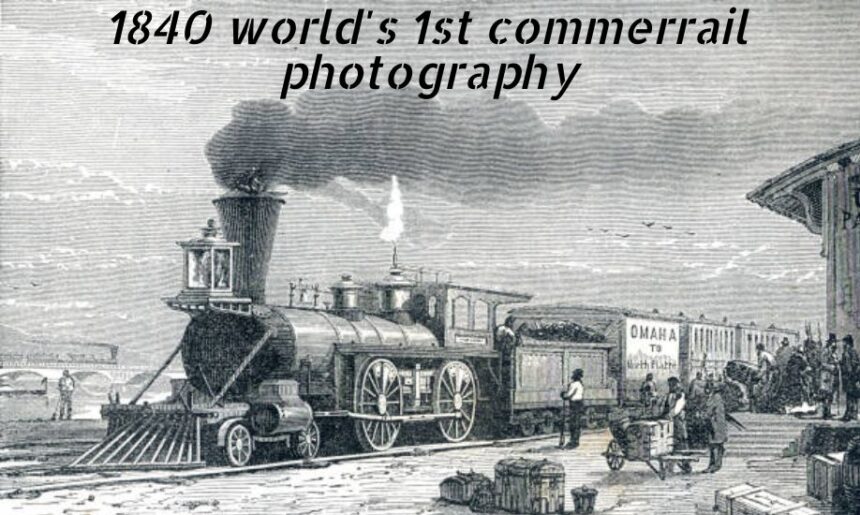The invention of photography in the early 19th century marked a revolutionary step in the documentation of human life. In 1840, a groundbreaking milestone was achieved with the establishment of the world’s first commercial photography studio. This article delves into the fascinating history and significance of “1840 world’s 1st commercial photography,” examining how it transformed art, science, and business into a thriving global industry.
The Birth of Commercial Photography
The story of the “1840 world’s 1st commerrail photography” began with Alexander S. Wolcott and John Johnson, two visionaries who opened the first commercial photography studio in New York City. Known as the “Daguerrean Parlor,” their establishment was dedicated to creating photographic portraits using the daguerreotype process. This innovative technique, developed by Louis Daguerre, involved exposing a silver-plated copper sheet to iodine vapor and then light, creating detailed and permanent images.
Wolcott and Johnson’s studio symbolized the merging of art and technology. With their invention of a camera that used a concave mirror to focus light, they reduced exposure times significantly, making portrait photography practical and accessible for the public. This pioneering achievement gave rise to a new industry that would forever change the way people captured memories.
The Innovations Behind the 1840 Milestone
The “1840 world’s 1st commerrail photography” was not just about opening a studio; it was a testament to innovation. Wolcott’s camera design eliminated the need for traditional lenses by using a concave mirror, a breakthrough that allowed images to be captured more efficiently. This invention addressed a critical limitation of early photography: long exposure times.
The rapid reduction in exposure times transformed photography from a scientific novelty into a commercial enterprise. Customers could now sit for portraits without enduring the discomfort of remaining still for extended periods. This technological advancement laid the groundwork for the rapid popularization of photography.
Societal Impact of 1840 world’s 1st commerrail photography
The establishment of the “1840 world’s 1st commerrail photography” studio marked a turning point in how society viewed and valued visual documentation. For the first time, people from various social classes could afford to have their portraits made, preserving their likeness for generations.
Photography democratized art, making it accessible to individuals who could not afford traditional painted portraits. The ability to immortalize moments and loved ones resonated deeply with the public, creating an insatiable demand for photography services. This shift in societal perception also paved the way for photography to become a respected art form and a vital tool for historical documentation.
The Spread of Commercial Photography
The success of the “1840 world’s 1st commerrail photography” studio in New York City inspired others around the world. Similar establishments began appearing in major cities such as London and Paris, spreading the daguerreotype process and the concept of commercial photography globally. Each new studio contributed to refining the technology and artistic techniques, propelling the medium to new heights.
By the mid-19th century, photography had become a lucrative industry, with studios offering services ranging from individual portraits to large-scale documentation projects. Entrepreneurs and inventors worked tirelessly to improve photographic techniques, leading to innovations such as albumen prints and the introduction of color photography later in the century.
Challenges and Triumphs in Early Photography
While the “1840 world’s 1st commerrail photography” studio marked a significant achievement, the early days of commercial photography were not without challenges. High costs, technical complexities, and the fragility of photographic materials presented significant hurdles. However, the determination of pioneers like Wolcott and Johnson ensured steady progress.
The challenges also sparked creativity and competition, resulting in the development of more efficient photographic processes. From the wet plate collodion method to the eventual transition to film, the foundations laid in 1840 served as a springboard for continuous innovation in the field.
Legacy of 1840 world’s 1st commerrail photography
The legacy of the “1840 world’s 1st commerrail photography” studio is undeniable. It set the stage for photography to evolve into a versatile medium that serves purposes ranging from art to journalism and science. Today, photography is an integral part of everyday life, influencing culture, communication, and commerce on a global scale.
Wolcott and Johnson’s contribution not only established the commercial viability of photography but also underscored the importance of innovation and adaptability in the face of challenges. Their work remains a testament to the power of creativity and collaboration in shaping industries and societies.
Conclusion
The “1840 world’s 1st commerrail photography” was more than just the opening of a studio; it was a cultural and technological milestone that transformed human expression and documentation. By blending scientific ingenuity with artistic vision, Wolcott and Johnson created a legacy that continues to inspire photographers and innovators worldwide. As we celebrate the evolution of photography, it is essential to remember the groundbreaking achievements of 1840 that made it all possible.






